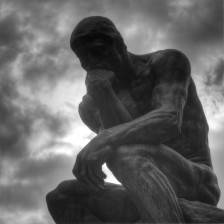Though I started blogging in 2009, I only became serious since last year, writing regularly. Some posts were good, some were sub-par. The posts I thought would make an impact were never even discussed and the posts I thought would cater only to a specific audience drew-in the maximum traffic. Now, at this time of the year, I felt it would be good to share links to my best posts of this year (and last year since I did not do one such post then) in one place. Note: these may not be the most popular posts on my blog, but, those which gave me an immense satisfaction in writing.
Time for New year resolutions?
Time rolls by and yet another year comes to an end. Years, months, days are but just yardsticks that measure its passage. Every year this time, almost all of us ask ourselves two questions:
- How did I live this year? If some look back with gratitude, some are just thankful its over.
- How do I want to live next year? We want to use this time as a ‘course correction’.
After taking stock of the situation of where we are and where we want to be, we promise ourselves to take steps to reach our goal. We promise ourselves a fresh beginning. ‘I’ll quit smoking’, ‘I’ll hit the gym’ we say to ourselves and, with all good cheer and intention we embark into a new year. Some reach their target but most don’t. When another December comes they promise themselves to do better yet again and move on to the next till the time it’s too late.
Choosing & Managing a GTD app
Moving from Things to Omnifocus made me question not just the app’s capability but also my workflow. Here, I have a collection of few points I noted when moving to Omnifocus:
On choosing the application:
- Identify your workflow: how does work come to you? Digital? Paper? Do you need a digital inbox to collect your stuff or physical? Where do you get more work? At home? Work? What kind of system helps in capturing, organizing that stuff? What are the other tools/apps you work with? How can you integrate them into your GTD system?
- How flexible is the system you chose to accomodate your working style? Do you have to change your thought process to fit it’s? or is it flexible enought to fit yours? If our brain senses even the slightest friction in the way we think and the way the system works, it may not trust it and hold off to unprocessed stuff in its psychic RAM defeating the purpose of having a task management application in the first place.
- How does the system scale? If tomorrow you change the way you work, can the system easily scale back and up without hiccups? (I created Things perspectives in Omnifocus, but, tomorrow if I don’t want to view my data in this way, I can simply delete these perspectives and create new ones.)
- No system is ever perfect. Every system has its own limitations:
Things in Omnifocus
Things had amazing focus lists. I just wish they did more. So, the first thing I did was after moving to Omnifocus was set tasks in sequential/parallel projects and assign start dates and due dates where necessary. After this, I wanted to recreate the focus lists from Things – Today, Next, Scheduled & Someday as perspectives.
Today:
Context filter: Active
Grouping: Context
Sorting: Project
Availability filter: Available
Status filter: Due or Flagged
Estimated time filter: Any duration
When I set this up initially, the status filter was set to ‘due’. But, this displayed only those tasks which did not have a start date but had a due date of that particular date. But, I didn’t want to use due dates for every item unless they were really due and would cause significant loss in some aspect if not done that day. So, I let due items pull up in this perspective and used the ‘forecast’ view from the iPhone app (which can be configured to show both due tasks and scheduled tasks) to decide if I wanted to do any of the tasks I scheduled for that day and flag them. Now, I changed the Status filter to show ‘due or flagged’ so that these flagged items would also get pulled into this perspective. I then assigned flags (by default) and start dates to repeating tasks so that they would automatically pull up here.
GTD, Omnifocus, Things & I
Flow. What is Flow? Wikipedia paraphrases Mihaly Csikszentmihalyi and defines ‘flow’ as the mental state of operation in which a person performing an activity is fully immersed in a feeling of energised focus, full involvement, and enjoyment in the process of the activity. But, how do we find optimal flow? A feeling of ‘being’ in the moment? Isn’t it by doing what we can do at this given moment and not letting your brain drift to things we cannot handle? Complex definitions aside, in practical terms how can we achieve this? How to know what we can do now? Task lists? Yes, if they are tagged with ‘Contexts’. A part of GTD jargon, a ‘context’ is a list of tasks that share some unique prerequisite or constraint. Example: calling someone requires to have a phone, working on that report needs you to be in the office, fixing the window requires you to be at home. These locations/tools limit the tasks we can perform in any moment. What if we had such a list at hand every moment, reminding us what we could do then? What if we had a system which housed all our tasks/unfinished work and let us easily filter them via contexts?
